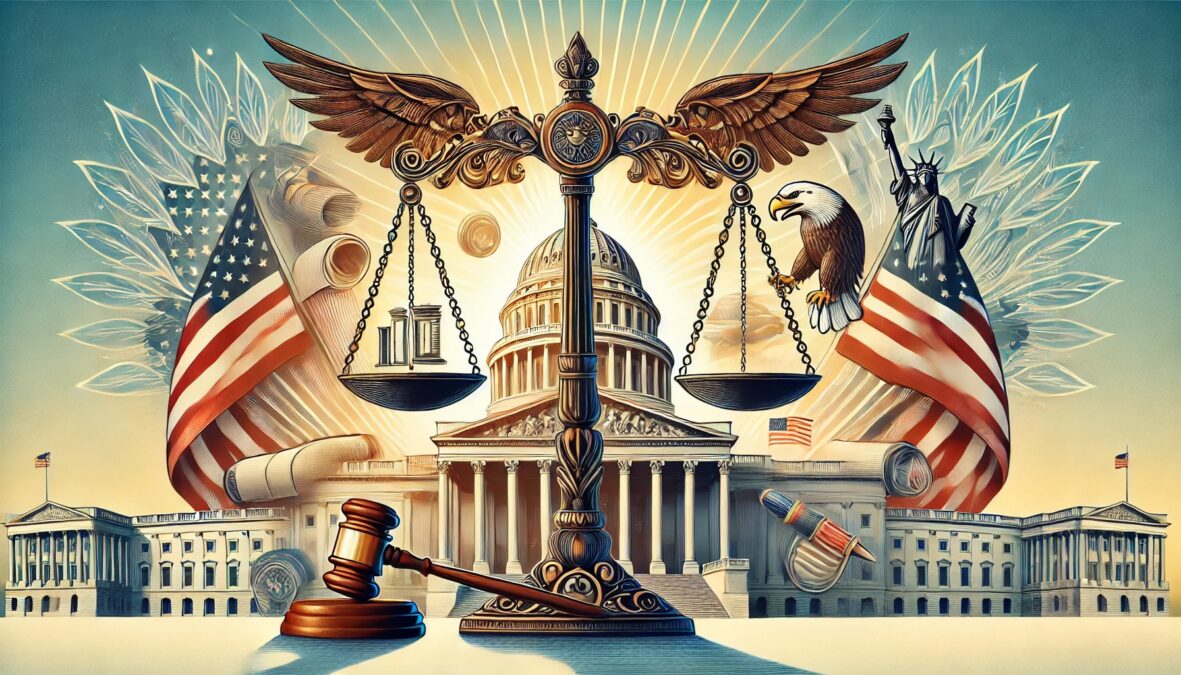As I sit here watching the Trump inauguration, I hear the honorable Senator from Minnesota, Amy Klobuchar, talking about how we have three equal branches of government. And, well… I started yelling at the TV. “We DON’T have three equal branches of government!” My family gave me that look—the one that says, “Dad, calm down.” But here’s the thing: this isn’t just a nitpick. The Founding Fathers didn’t design the branches of government to be equal. They designed them to be balanced. And that distinction makes all the difference.
A Biblical View: Why Checks and Balances Matter
The Founders had a clear understanding of human nature, and frankly, it wasn’t rosy. The Bible tells us, “The heart is more deceitful than all else and desperately sick; who can understand it?” (Jeremiah 17:9, LSB). Knowing that power corrupts, they created a government with checks and balances to prevent anyone from grabbing too much authority. James Madison famously put it this way in Federalist No. 51: “If men were angels, no government would be necessary.”
This biblical awareness of human fallibility isn’t new. God Himself established boundaries for Israel’s leaders in Deuteronomy 17:14–20, warning them not to accumulate excessive power or wealth. The Founders followed the same principle, dividing authority among three branches to ensure accountability and avoid tyranny.
The Three Branches: Different Roles, Same Team
Legislative Branch: Congress
The Legislative Branch was designed to be the powerhouse of the government. After all, it’s Congress that makes the laws, controls the budget, and declares war. Madison even admitted it would “predominate” in a republic (Federalist No. 51). To keep it from becoming too powerful, the Founders split it into two houses, each with unique roles and election processes (U.S. Constitution, Article I).
Biblically, this structure mirrors the shared leadership of the early church, where elders worked together to guide the congregation (Acts 15:1–35). Accountability was baked into the system.
Executive Branch: The President
The Executive Branch was created for decisiveness and action, especially in times of crisis. Alexander Hamilton argued for a single, energetic leader, writing, “Energy in the Executive is a leading character in the definition of good government” (Federalist No. 70). Imagine trying to run a war or negotiate a treaty with a committee of presidents—disaster waiting to happen!
Strong leadership is a biblical principle as well. Nehemiah, for example, led the people of Israel with focus and determination when they rebuilt Jerusalem’s walls (Nehemiah 2:17–18).
Judicial Branch: The Supreme Court
The Judiciary, as Hamilton observed, is the “least dangerous” branch because it has “neither force nor will, but merely judgment” (Federalist No. 78). Its role is to interpret the law and ensure that both Congress and the President operate within constitutional limits.
This is similar to the biblical role of judges in Israel, who applied God’s law to specific situations (Judges 2:16–19). While essential, their role was limited—they weren’t lawmakers or kings.
Checks and Balances: Biblical Wisdom at Work
The system of checks and balances reflects biblical principles of shared authority and accountability. Proverbs 11:14 says, “Where there is no guidance, the people fall, but in abundance of counselors there is victory” (LSB). Each branch has tools to keep the others in check:
- Congress writes laws, but the President can veto them (U.S. Constitution, Article I, Section 7).
- The President appoints judges, but the Senate must confirm them (Article II, Section 2).
- The Judiciary can declare laws unconstitutional (Marbury v. Madison, 1803).
This balance prevents any one branch from overpowering the others, ensuring the government serves the people rather than itself.
Equal or Balanced?
Here’s the truth: the branches weren’t designed to be equal in power. The Founders expected Congress to have more influence because it controls the laws and the budget. However, they gave the President and the Judiciary enough authority to prevent legislative overreach. It’s not about equality; it’s about balance. This principle echoes the biblical parable of the talents (Matthew 25:14–30), where authority is a stewardship, not a free-for-all.
Wrapping It Up: A Masterpiece of Accountability
The Founding Fathers’ system wasn’t about making the branches equal; it was about creating a balanced structure where power is shared and checked. Their design reflects a deep understanding of human nature and biblical truths about leadership, accountability, and justice. While the branches may clash at times (and boy, do they), that’s part of the plan. It’s messy, but it works. And for that, we can be grateful—to the Founders and to God, whose wisdom they reflected.
References
Hamilton, A. (1788). Federalist No. 70. Retrieved from https://founders.archives.gov.
Hamilton, A. (1788). Federalist No. 78. Retrieved from https://founders.archives.gov.
Madison, J. (1788). Federalist No. 51. Retrieved from https://founders.archives.gov.
The Holy Bible, Legacy Standard Bible (LSB).
U.S. Constitution. (1787). Articles I-III. Retrieved from https://constitution.congress.gov.
Marbury v. Madison, 5 U.S. 137 (1803).






